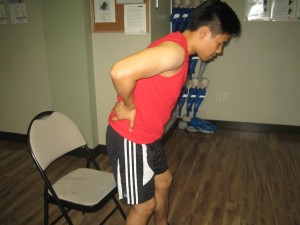The sacrum is basically a triangular-shaped bone situated at the base of the spine, connecting to the pelvis. If a sacral stress fracture occurs, it involves small-sized breaks in the sacrum area. It is important to note that stress fractures in the sacral area are typically caused by certain medical conditions that can make the bones frailer or if subjected to continuous and rigorous physical activity. There are also conditions that can affect the density of bone such as osteoporosis especially among the elderly which can also lead to the development of sacral stress fractures.
http://youtu.be/Eev1LxCNepM
Pain triggered by physical activity
Individuals who have sacral stress fractures often experience pain when engaging in any type of physical activity. There is apparent limping or pain once the individual walks or during simple bodily movements. Additionally, performing any type of physical activity linked with different forms of exercise such as running, jogging, yoga, lifting weights or dancing can cause noticeable pain that can disrupt the performance. Even sitting, jumping or running can only intensify the pain. Other bodily reflexes such as sneezing and coughing can also worsen the pain felt by the individual.
Back pain

It is important to note that back pain is a usual symptom that is connected to a stress fracture on the sacrum. The lower back and lumbar area can be affected and susceptible to this injury. Even movement involving the region can be restricted due to the discomfort it causes. The individual must consult a doctor for ways in order to help relieve the pain. If you will enroll in a first aid course, you will learn measure for pain management.
Range of motion
The range of motion of the body is also affected if the individual sustains a sacral stress fracture. The hip area can be affected with an obvious decrease in the range of motion for no apparent reason. If the individual stands on one leg, there is soreness and pain on the affected side of the body.
Groin, hip, buttock and pelvic pain
There is also noticeable pain in the thigh, groin and buttock. In most cases, there is also a distinct tenderness around the pubic area. As for the gluteal muscles, they can feel sore and strained, especially during movement.
Osteoporosis
Sacral stress fractures can occur among the elderly especially those who have osteoporosis. Oftentimes, the injuries can be due to falls or might not be linked to any type of injury. Those who are afflicted with this type of injury typically complain of low back and buttock pain symptoms.
Sciatica
Since a sacral stress fracture involves the lumbar region of the back, it is also the same with sciatica, thus both conditions can manifest simultaneously. Sciatica typically affects one side of the body. The symptoms are comparable to a sacral stress fracture such as burning, dull or piercing irregular shooting pain in the rear up to the leg. When the individual sits and tries standing up, it can also cause pain.
